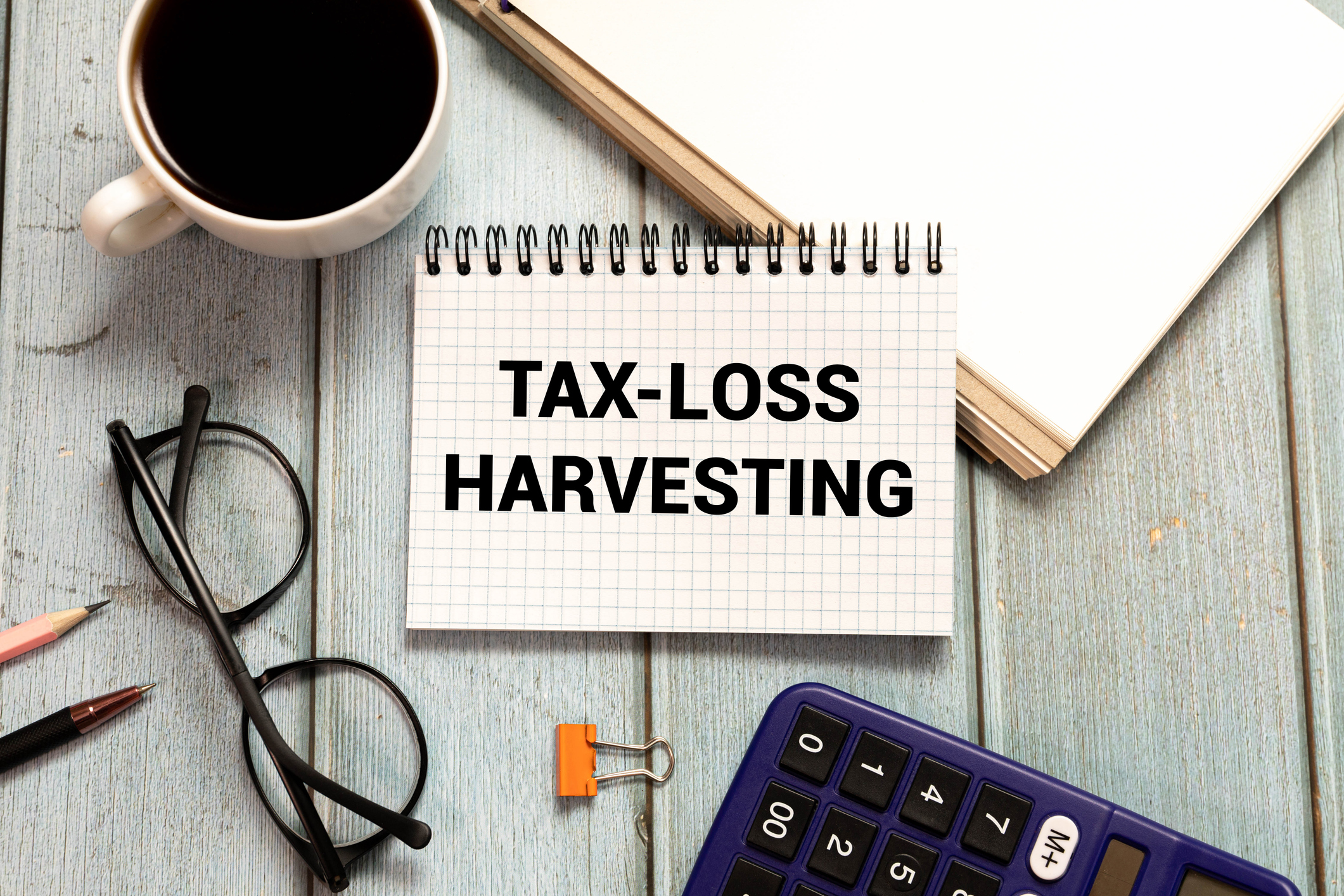
Depending on their circumstances, each individual has a different list of the best investing moves to make before the end of the year. But there are a few broad categories of actions that make sense for most folks.
These general tips include making sure your portfolio is diversified and that you're making the best decisions to maximize your tax efficiency and long-term returns.
Every investor has a different risk tolerance, so you should always make the best decisions for your unique situation. These three end-of-year investing moves are a good place to start.
1. Tax-loss harvesting

Tax-loss harvesting is a fancy term for intentionally selling an investment at a loss to offset the taxes you'd pay on gains in other, more profitable trades.
The U.S. tax code is incredibly complicated, and it would take a separate article or two to explain it. (You can check out the Taxes section on Kiplinger.com to find more tax-specific information.) But in a nutshell, capital gains taxes on investments held for less than 12 months typically correspond to your normal income tax rate, which can be as high as 37%. That can really eat into your profits if you're paying Uncle Sam more than a third of what you've gained.
However, it's all about net profits. So if you make $8,000 on a short-term investment but lock in $4,000 in losses in another asset you were planning on selling anyway, you only pay taxes on the $4,000 that's not offset. What's more, if your losses exceed your gains, you can deduct up to $3,000 in net losses from your total annual income.
It may sound counterintuitive, but selling a losing stock position is an important year-end tool for investors when it comes to reducing tax burdens.
2. Rebalancing your portfolio

Nothing in life stays the same, including your investment portfolio. That means you need to take some time at least once per year to "rebalance" your investments to ensure the mix of assets is in line with your intentions and goals.
Let's take the popular 60/40 approach to investing, which is a portfolio that holds 60% stocks and 40% bonds. If you're lucky enough to be invested in a few high-flying stocks such as Robinhood (HOOD) or Palantir (PLTR) that have handily outperformed bonds, you could find that your mix is more like 70/30 or even 80/20.
That's a good problem to have when your stocks have grown rapidly. But it also comes with additional risk as you are now putting more eggs in those baskets. To stay truly diversified, it may make sense to rebalance by selling some of your outperforming stocks and moving that cash into bonds to get back to the proper mix.
After all, stocks can rise quickly but can also fall quickly. So, when considering your end-of-year investing checklist, don't overlook your long-term strategy based on short-term trends that have changed your portfolio's makeup.
3. Consider annual limits

Not everyone has extra cash to spare right now. But if you do, it's worth considering how much headroom you have left on various tax-efficient investing vehicles.
For instance, the maximum contribution to a 401(k) in 2025 is $23,500. If you are getting a big bonus or if you can spare a few extra bucks from your final paycheck, consider tightening your belt for a pay period or two and allocating extra money to your tax-deferred retirement plan as an end-of-year investing move.
The same holds true for 529 education plans. There are aggregate contribution limits and other restrictions that vary by state, and are worth researching on your own. But keep in mind that individuals other than yourself can contribute to a 529 plan in many cases. This means generous grandparents, aunts and others can opt for a long-term holiday gift to your child's education rather than the latest toys or fashion items.
Lastly, while IRA contributions are most often limited by the tax filing deadline in April rather than the end of the calendar year, the next four months may go quickly. So, if you're doing some of this other year-end financial housekeeping, it's worth considering whether you want to max out your IRA based on the 2025 maximum contribution of $7,000 for those under 50.







